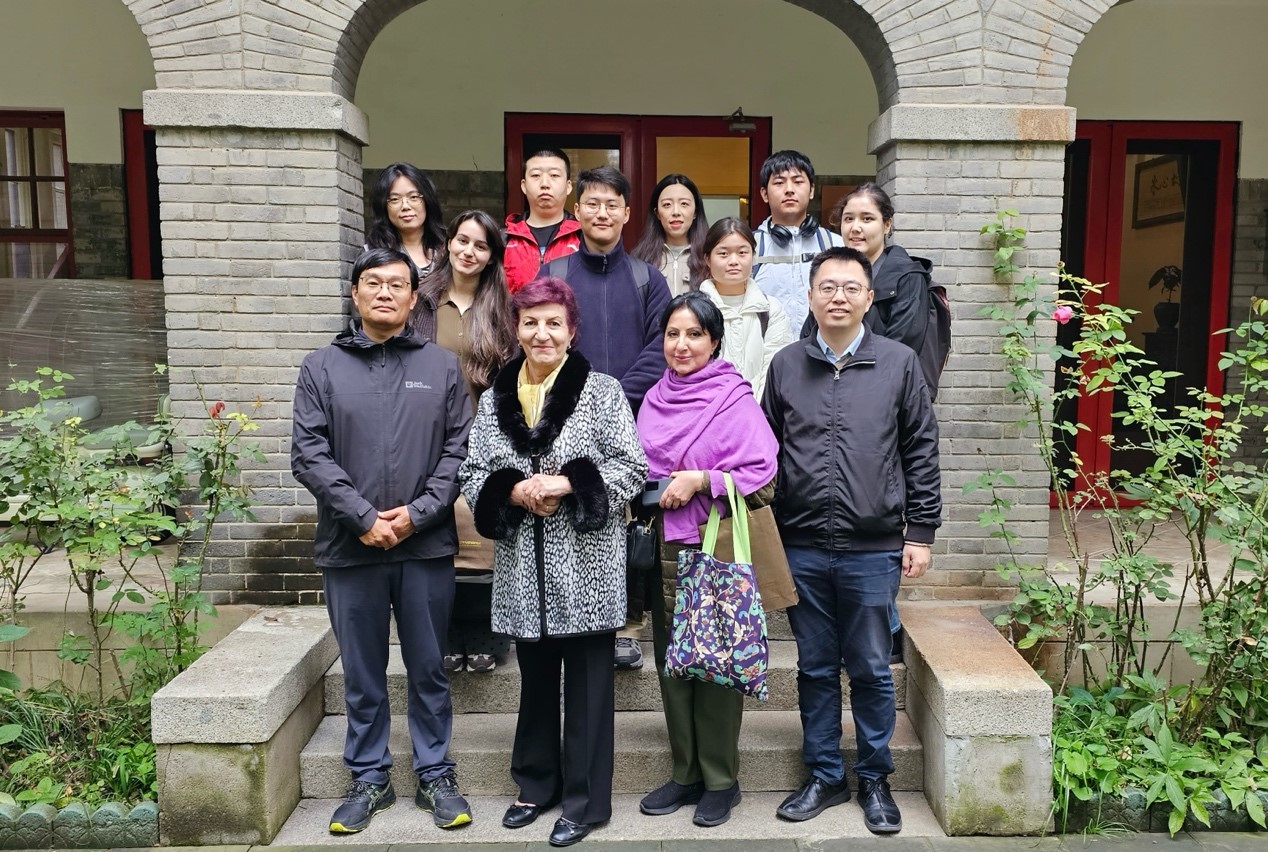
The 66th session of the Adventus Amicorum series, organized by the Institute of Area Studies Peking University (PKUIAS), was held on October 16, 2025. The lecture, titled “The Role of Armenians in the Social and Cultural Life of the Ottoman Empire,” was delivered by Prof. Seda Gasparyan, Honorary Scholar of the Republic of Armenia, Corresponding Member of the National Academy of Sciences of Armenia, and Chair of the Department of English Linguistics at Yerevan State University. The session was moderated by Zan Tao, deputy director of PKUIAS and a professor at PKU’s Department of History. Associate Professor Lusine Sahakyan from the Department of Turkic Studies at Yerevan State University’s Institute of Oriental Studies, along with Associate Professor Shi Yue from PKU’s School of Foreign Languages, participated in the discussion.
Gasparyan began by highlighting the essential role Armenians played in the political, economic, and cultural life of the Ottoman Empire, noting that their contributions were “immeasurable in scope and significance.” She reviewed the prominent achievements of Armenians in finance, crafts, architecture, and the arts—from exquisite jewelry and metalwork to their service as architects and painters for the Sultan’s court. Armenian craftsmanship, she noted, profoundly shaped the empire’s aesthetic and economic landscape. She highlighted the Balyan family, renowned architects who designed the Dolmabahçe Palace and Ortaköy Mosque—emblems of the late Ottoman era that fused Baroque and Ottoman styles.
In the realm of public service and reform, Armenian elites took an active part in the Tanzimat modernization movement, serving as ministers, parliamentarians, and advisors who promoted reforms in law, finance, and medicine. Gasparyan underscored the foundational role Armenian physicians played in developing the empire’s public health system, including their key involvement in establishing the Ottoman Red Crescent Society and the Imperial Medical Association, which significantly contributed to epidemic prevention and medical education.
Culturally, Armenians stood at the forefront of artistic innovation. Beyond weaving, ceramics, and photography, they pioneered modern music and theater. Nineteenth-century composer Tigran Tchouhajian wrote the empire’s first Turkish-language opera, Arif’s Deception, while priest and ethnomusicologist Komitas Vardapet preserved and popularized Armenian folk traditions through choral performances, enriching the empire’s multicultural fabric. “Armenians,” Gasparyan remarked, “were not merely participants in Ottoman culture—they were innovators and agents of modernization.”
The lecture also explored the historical importance of Armeno-Turkish, a unique writing system that used the Armenian alphabet to transcribe Ottoman Turkish. This hybrid script, Gasparyan explained, served both as a means of cultural preservation and as a practical bridge in a multilingual empire. The first Turkish-language novel, Akabi Hikayesi (The Story of Akabi), was written in this script, exemplifying the creative exchanges across ethnic and linguistic boundaries.
Armenians also led advancements in printing and education. As early as the 16th century, they established printing presses in Constantinople, catalyzing the development of publishing and learning. Armenian-founded schools and theaters played a pivotal role in the empire’s Enlightenment. In 1859, director Serop Hekimian founded the Oriental Theater, one of the first professional stages in the Ottoman Empire. This was followed by Hagop Vartovian’s Ottoman Theater, which introduced Turkish-language performances and left a lasting legacy.
In conclusion, Prof. Gasparyan noted that the Armenian experience was both one of creativity and tragedy. Recalling the massacres and exile of the Armenians in the Ottoman Empire during the late 19th and early 20th centuries, she emphasized that even under oppression and displacement, Armenians sustained their civilization through art and scholarship. “To study the Ottoman Empire without discussing the Armenians,” she asserted, “is like describing a body without its soul.”
During the discussion, Zan Tao and Shi Yue explored the topic through the lenses of Orientalism and postcolonial studies, critiquing the persistent “civilizational hierarchy” in Western scholarship. Zan noted that while challenging Eurocentrism is crucial, scholars must also avoid replacing it with new forms of centrality. He proposed that China and Armenia—both ancient civilizations facing structural inequities in global knowledge systems—should pursue renewed dialogue and cooperation through cultural self-awareness and multilateral exchange.

Participants concluded that the lecture not only illuminated the multifaceted role of Armenians within the Ottoman Empire’s pluralistic fabric but also offered fresh perspectives for understanding cross-civilizational interaction and regional studies.


